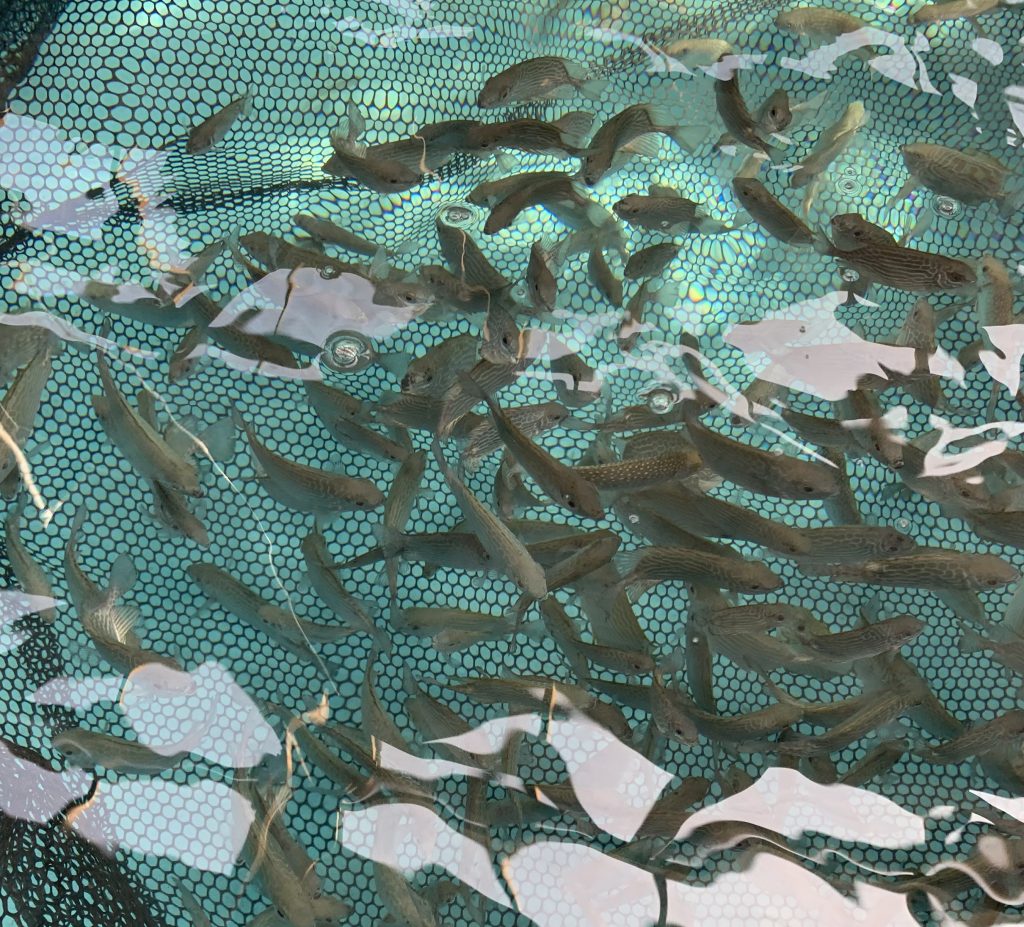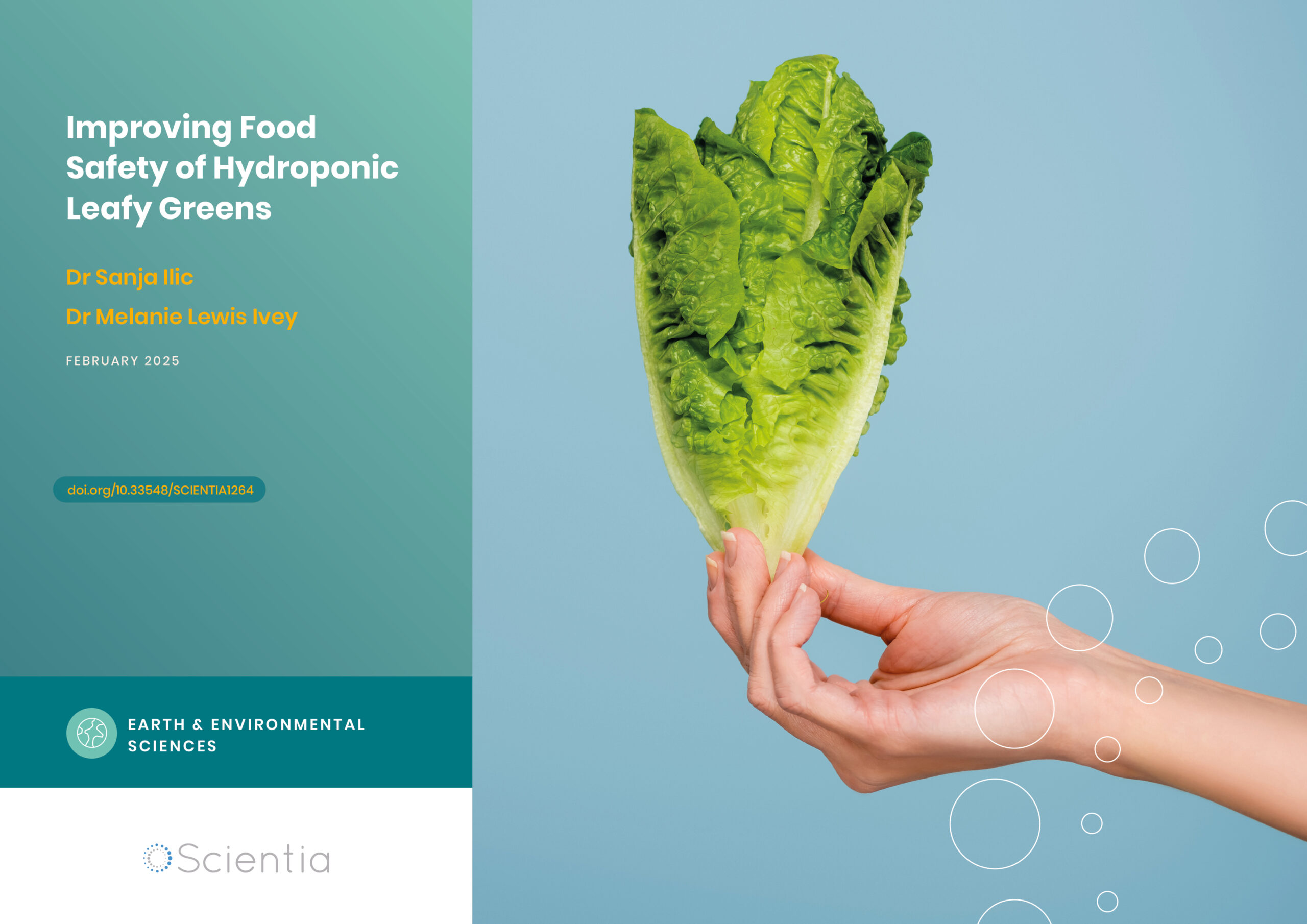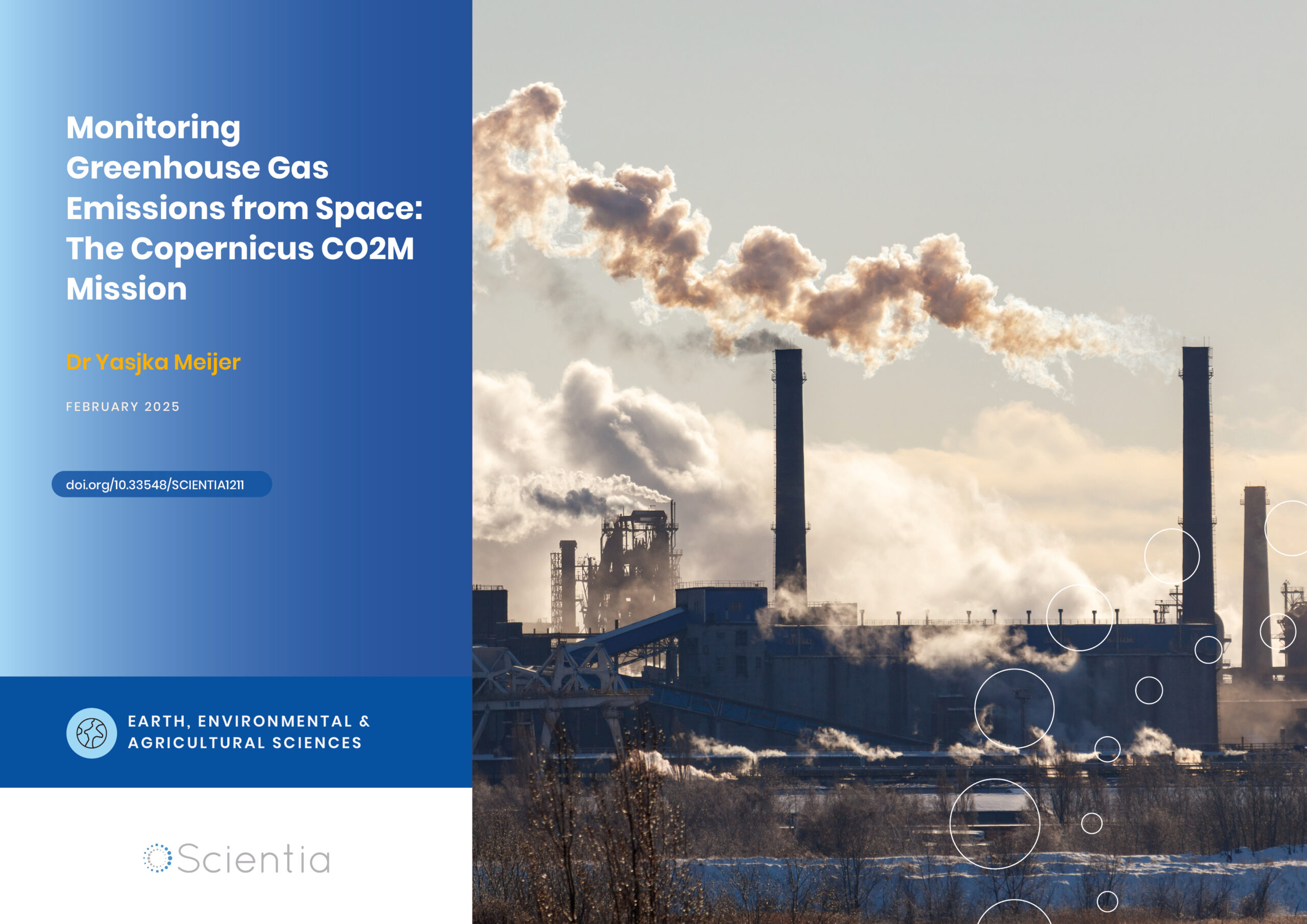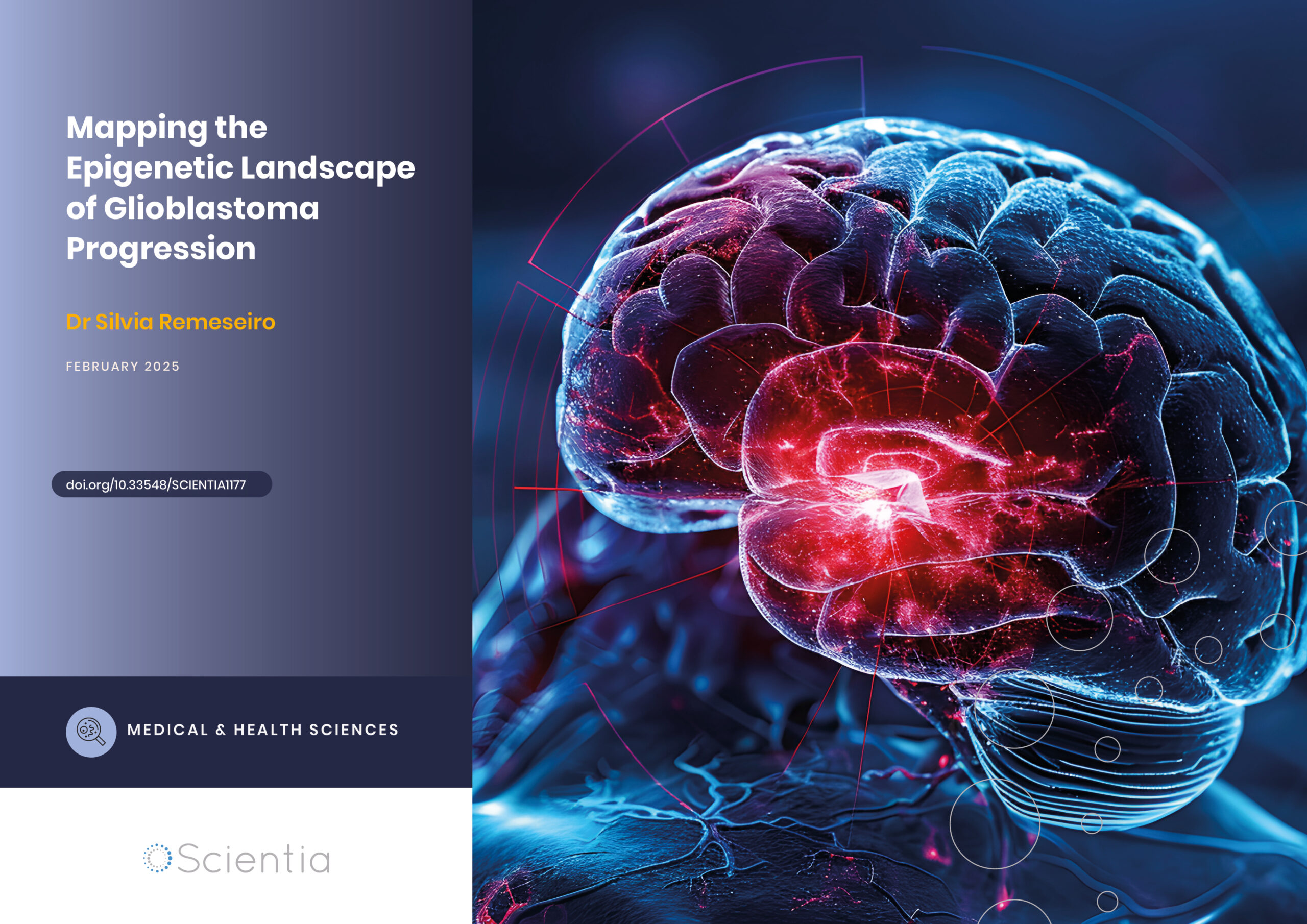Protecting Palau’s Food Security and Marine Ecology Using Satellite Technology
Palau, a remote group of islands in the Pacific Ocean, relies heavily on wild fish to feed its citizens and support its economy. With a growing population and thriving tourism industry, the country cannot afford a crash in catch size. However, climate change is altering the ecosystems of Palau’s fishing waters, threatening harvests of important fish species. To improve the country’s food security and accelerate the achievement of the UN’s Sustainable Development Goals, the Palauan Government has teamed up with the Nature Conservancy to build a sustainable aquaculture community on the islands, with support from NASA. Using NASA satellite observations, the collaboration helps aquaculture farmers to find optimum locations to farm fish and shellfish, allowing them to produce an abundance of seafood while protecting the surrounding marine environment.
Palau’s Dwindling Seafood Supply
Palau is a remote cluster of 340 small islands in the Pacific Ocean, just over 1000 kilometres east of the Philippines, with a population of fewer than 23,000 citizens and a land area roughly half the size of New York City. The average Palau resident consumes 67.7 kilos of seafood each year; that’s over three times the global average. This makes Palau’s fishing industry vital for the country’s food security and economy.
Similar to many other countries around the world, Palau relies on its seafood industry as a major source of protein. With a growing population and booming tourism industry, there is an increased strain on resources. This means that the country could struggle to provide enough seafood for the population while reducing negative impacts on the environment. This is especially challenging given current climate change, which is altering marine habitats and reducing wild fish populations.
Palau’s marine ecosystem is particularly sensitive to climate change. Many of the islands lie close to the ‘Coral Triangle’, which boasts the highest biodiversity of any shallow-reef ecosystem on Earth. This means that small changes in temperature can dramatically alter the abundance and diversity of fish and other marine species that live around the islands. Palau’s annual catch has already decreased in recent years, and this is expected to drop by a further 25% by 2050 due to climate change.
Aside from fish and shellfish, Palau imports most of its other food, due to limited arable land on the islands. Therefore, the projected decrease in fresh seafood is a serious cause for concern. With a reduced supply of nutritious seafood, many people may turn to eating more processed food, such as canned meat. Processed food is already popular in Palau, and is a major factor behind the country’s rising levels of obesity and diet-related conditions. It is therefore clear that fresh seafood needs to remain abundant to ensure the future health of Palau’s citizens.

The Role of Aquaculture
The instability of wild fish stocks around Palau, and the increasing demand for seafood from residents and tourists, call for new approaches to ensuring the country’s future food security. This is where marine aquaculture comes in. Marine aquaculture involves the farming of aquatic organisms such as fish, shellfish and seaweed, typically within pens or cages in coastal waters. This method has the potential to be a sustainable alternative to catching wild seafood.
‘When aquaculture is well located and properly managed, it provides a sustainable alternative to wild fisheries,’ explains Jonathan MacKay, a marine spatial scientist at the Nature Conservancy (TNC). ‘However, when aquaculture is improperly sited and managed, it can result in a suite of negative impacts on the environment and communities, including habitat degradation and poor water quality.’
Therefore, aquaculture planning and management is vitally important to make sure there is enough seafood to feed the population, without causing long-term environmental degradation. However, sustainable practices can be difficult to implement when seafood is in such high demand, and is also responsible for propping up a large portion of the country’s economy.
Some attempts have been made to combat this issue, such as a farm loan program designed to support aquaculture farmers in the country. However, when applying to the program, the applicant must provide a proposal that details how and where the farming can be carried out in a sustainable fashion. This is incredibly difficult to assess without adequate technology and other resources, meaning that many farmers are ineligible for the loan.
Indeed, aquaculture farmers in Palau have appealed for help with identifying appropriate locations for their aquaculture operations, as it is prohibitively expensive and time-consuming to conduct environmental assessments on potential sites themselves.
Therefore, it is apparent that aquaculture support plans should first focus on equipping farmers with the resources, technology and knowledge they need to produce seafood in a way that is not detrimental to the environment.

A New Collaboration
A new management strategy was unveiled in 2016 by Palau’s President Tommy Remengesau, with the aim of promoting sustainable aquaculture to ensure the country’s future food security. ‘Palau cannot continue to rely entirely on the wild when it comes to subsistence and commercial food production,’ he declared. Palau’s incoming President, Surangel Whipps Jr., has similarly identified aquaculture as a priority within his new administration.
Sustainable aquaculture lies within the core of the country’s economic development plan. However, being a small and remote cluster of islands, Palau does not currently host the technology needed for sustainable aquaculture development. Therefore, the Palauan Government has teamed up with NASA, TNC and other organisations, to build a thriving and sustainable aquaculture industry. In particular, NASA satellite observations will be utilised to help farmers determine locations for their aquaculture operations that will have the least environmental impact.
‘Our research brings together the power of NASA data and technology to help inform marine spatial planning for sustainable marine aquaculture,’ says Jonathan MacKay, a key member of the collaboration. ‘The overall goal of the project is to improve food security in Palau while ensuring Palau’s unique and pristine marine environment is protected.’ MacKay and his colleagues’ project began in 2018 and plans to run until the end of 2022.
‘The project will work to acquire relevant data, perform necessary analyses, and develop web applications to inform climate-ready aquaculture spatial planning and management,’ says Robert Jones of TNC, who leads the collaboration. He explains that their work aims to ‘create the enabling conditions for sustainable aquaculture sector development in Palau that will yield a climate-ready source of healthy food for its citizens.’
In doing so, the project will accelerate the achievement of three of the UN’s Sustainable Development Goals: life below water, climate action, and good health and well-being.

Identifying Ideal Sites
According to MacKay, one important factor to consider when finding an ideal aquaculture site is the water depth. If the water is too shallow, waste produced from aquaculture operations can accumulate on the seabed, damaging seafloor ecosystems.
In a 2020 study, the team reviewed siting standards around the world and incorporated input from stakeholders on environmental and economic feasibility to determine the ideal ocean depths for aquaculture around Palau. In a separate study, researchers created a dataset by combining images from the NASA satellite Landsat 8 and depth values collected on the water to accurately map the seafloor around Palau.
In addition to depth data, several project members are also using climate forecasting to indicate areas that are least sensitive to climate change. Specifically, they are identifying locations where ocean temperatures are changing most slowly, as these regions are considered to be the most desirable to for setting up aquaculture operations. This is because large increases in temperature could impact the health of farmed fish and shellfish, for example by facilitating the spread of disease and pests that thrive in warmer water.
Other factors that must be taken into account include the presence of critical habitats, such as coral reefs and seagrass beds, which are being identified using different datasets from the NOAA and Allen Coral Atlas. The collaboration also considers the distributions of dugongs and other protected species, along with coastal areas that are commonly used for recreation and those that frequently experience dangerous algal blooms. When considering potential aquaculture sites, such regions must be avoided.
MacKay and his collaborators incorporate all of these factors and many more into their suitability analysis to identify optimum locations. ‘By incorporating sustainability factors into a spatial analysis, the results can ensure that the site avoids use conflicts, sensitive habitats, and are economically viable,’ he says.
Using the results of this comprehensive analysis, other collaborators on the project aim to create a custom online data-viewing platform, which will provide users with up-to-date data to indicate the best locations for sustainable aquaculture.

Building Capacity
As part of the project, several collaborators based at TNC are also providing training modules to train Palauan government representatives on spatial planning methods and suitability mapping. This training program aims to equip the people of Palau with the skills and knowledge they need to expand their aquaculture industry in a sustainable and environmentally friendly way. The collaboration has also prepared a guidance manual to help with planning, management, and implementing sustainable policies.
The collaboration is hopeful that this project will be the first to have a long-lasting positive impact on Palau’s seafood industry, future food security and public health. In the coming years, MacKay and Jones hope that their work will lead to the development of a thriving and sustainable aquaculture industry that helps meet different aspects of the UN’s Sustainable Development Goals. As MacKay concludes: ‘Already, we’ve brought together farmers, government partners, local universities together to work towards achieving a mutual goal of developing Palau’s aquaculture industry that benefits food security and preserves Palau’s pristine marine environment.’
Reference
https://doi.org/10.33548/SCIENTIA731
Meet the researchers

Jonathan MacKay
Marine Spatial Scientist – Aquaculture Contractor
CSS Inc, in support of The Nature Conservancy
San Francisco, CA
USA
Jonathan MacKay is a Marine Scientist with over a decade in the profession, seven of which have been dedicated to advancing sustainable aquaculture. MacKay earned his Bachelor’s degree in Marine Science from The University of the South Pacific, Fiji, before progressing to a Master’s in Environmental Science from California State University, Los Angeles. Upon graduating, he worked as a California Sea Grant Fellow on the Aquaculture Program at the California Department for Fish and Wildlife. Since February 2020, MacKay has been working as an Aquaculture Marine Spatial Scientist with The Nature Conservancy, and the National Ocean Atmospheric Administration (NOAA). He is also a UCLA certified AAUS Scientific Diver, and PADI certified Divemaster.
CONTACT
E: jonathan.mackay@tnc.org

Yvonne Ueda
Micronesia Fisheries Project Manager
The Nature Conservancy
Koror, Palau
Yvonne Ueda was born and raised in the island of Palau. Ms Ueda is currently the Micronesia Fisheries Project Manager for The Nature Conservancy Micronesia Program and is based in Palau. Her role provides day-to-day management, leadership and implementation of the Conservancy’s coastal fisheries projects in the Republic of Palau. Prior to The Nature Conservancy, Ms Ueda served 12 years in the Government, in the Ministry of State as the Foreign Service Officer coordinating activities with various countries, regional and international organisations to support Palau, negotiating treaties, aids and other technical support ensuring Palau’s interests and policies are represented.
CONTACT
E: yvonne.ueda@tnc.org

Mike Aulerio
Geographic Information System Specialist & Conservation Information Manager II
The Nature Conservancy
Koror, Palau
As Geographic Information System Specialist and Conservation Information Manager II, Mike Aulerio is responsible for GIS technical services in support of conservation activities, both marine and terrestrial, of the Conservancy Micronesia Program and its government and non-government partners in the five Micronesian jurisdictions. In addition, he will also provide similar support to other Conservancy’s programs within the Pacific Island Countries Operation Unit. Before joining the Conservancy in 2007, Mike worked for the Office of PALARIS, Palau, Ministry of Resource and Development for seven years as Assistant GIS Analyst. He also regularly teaches GIS at Palau Community College under the Operation Management Improvement Project.
CONTACT
E: maulerio@tnc.org

Robert Jones
Global Aquaculture Lead
The Nature Conservancy
Arlington, VA
USA
Robert Jones is an expert in the field of aquaculture, with over a decade of experience in this area. Jones directs the Global Aquaculture Program at The Nature Conservancy, where he leads projects in seven countries around the world. In 2012, he was awarded his Master’s degree in Marine Affairs and Policy, with a focus on aquaculture and fisheries, from the University of Miami. Since then, he has worked in a variety of important institutes, including the US National Marine Fisheries Service Office of Aquaculture, and the US Department of State Office of Marine Conservation. In 2019, he was a Robert B. Wilson Harvard Business School Fellow for Environmental Leadership.
CONTACT
E: robert.jones@tnc.org
KEY COLLABORATORS
The Nature Conservancy
Palau Environmental Quality Protection Board
Palau Ministry of Agriculture, Fisheries, and Environment
Palau Community College
FUNDING
National Aeronautics and Space Administration – award number: 80NSSC19K0188

Want to republish our articles?
We encourage all formats of sharing and republishing of our articles. Whether you want to host on your website, publication or blog, we welcome this. Find out more
Creative Commons Licence
(CC BY 4.0)
This work is licensed under a Creative Commons Attribution 4.0 International License. 
What does this mean?
Share: You can copy and redistribute the material in any medium or format
Adapt: You can change, and build upon the material for any purpose, even commercially.
Credit: You must give appropriate credit, provide a link to the license, and indicate if changes were made.
More articles you may like
Improving Food Safety of Hydroponic Leafy Greens
Hydroponic farming is experiencing rapid growth worldwide, offering a sustainable and efficient method of producing fresh, nutrient-rich crops. However, the unique conditions of hydroponic systems also present complex food safety challenges. Dr Sanja Ilic and Dr Melanie Lewis Ivey, researchers at The Ohio State University, are at the forefront of efforts to understand and mitigate the risks of human pathogen contamination in commercial hydroponic production. Their pioneering work is providing crucial insights and practical guidance to help ensure the safety and nutritional value of hydroponically grown leafy greens.
Dr Paul Robertson | Artificial Intelligence in the Cockpit: New Systems Could Help Prevent Aviation Accidents
Despite significant advances in aviation safety over recent decades, accidents still occur that could potentially be prevented with better warning systems. Dr Paul Robertson of Dynamic Object Language Labs, Inc. (DOLL) is leading groundbreaking research into how artificial intelligence could help pilots avoid dangerous situations. His team’s work reveals promising developments and important cautions about implementing AI in aircraft cockpits, with implications for the future of aviation safety.
Dr Yasjka Meijer | Monitoring Greenhouse Gas Emissions from Space: The Copernicus CO2M Mission
Atmospheric concentrations of carbon dioxide (CO2) and methane (CH4) have been steadily rising due to human activities, contributing to global climate change. Dr Yasjka Meijer from the European Space Agency is responsible for the objectives and requirements of the Copernicus Anthropogenic Carbon Dioxide Monitoring (CO2M) mission – a constellation of satellites that will enable the monitoring of anthropogenic greenhouse gas emissions from space with unprecedented accuracy and detail. This groundbreaking mission aims to support international efforts to reduce emissions and combat climate change.
Dr Silvia Remeseiro | Mapping the Epigenetic Landscape of Glioblastoma Progression
Glioblastoma, the most aggressive form of brain cancer, continues to challenge medical professionals with its poor survival rates. Recent groundbreaking research by Dr Silvia Remeseiro and her colleagues at Umeå University in Sweden has shed light on the complex epigenetic and chromatin-related mechanisms underlying the communication between neurons and glioma cells. This research opens new avenues for understanding and potentially treating this formidable disease.




